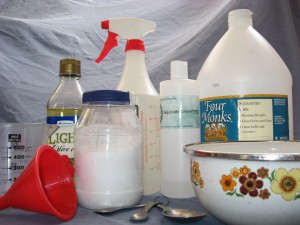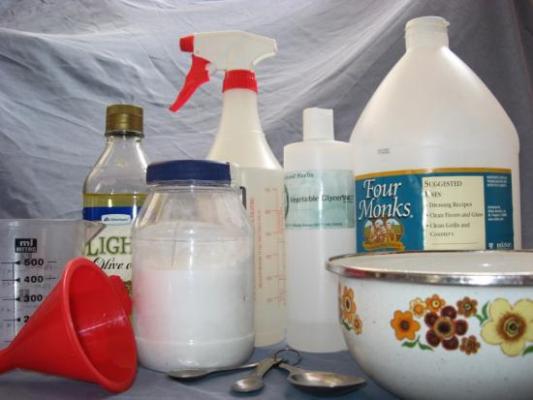10 Steps to Avoid Toxic Chemicals
 Did you know that products we use every day may contain toxic chemicals linked to women’s health problems, like breast cancer, reproductive harm like infertility and birth defects, asthma, and other serious illnesses?
Did you know that products we use every day may contain toxic chemicals linked to women’s health problems, like breast cancer, reproductive harm like infertility and birth defects, asthma, and other serious illnesses?
The good news is that WVE has done the research for you on effective ways to reduce your exposure to harmful chemicals in everyday products—and to get rid of toxic chemicals all together!
1. Make Your Own Cleaning Products
- It’s easy, fun, and cheap to make non-toxic cleaners from safe and effective ingredients like vinegar and baking soda. Find recipes here.
2. Avoid Synthetic Fragrance
- Shop for cleaners, laundry detergents, and personal care products labeled “fragrance-free” Warning: “Unscented” does not always mean fragrance-free!
- Don’t use air fresheners. Click here for tips to reduce odors around the home naturally.
3. Give Your Personal Care Products a Makeover
- Read the label to avoid chemicals like parabens, sodium laureth sulfate, and oxybenzone.
- Check our partner EWG's Consumer Guides to find safer products.
- Use fewer products, and use them less frequently to reduce exposures.
4. Go “BPA-Free”
- Ditch the canned foods when possible and opt for fresh or frozen fruits and vegetables instead.
- Look for products packaged in glass or lined cardboard instead of cans.
- Don’t take paper receipts at ATMS, grocery stores, etc. unless you really need them
5. Watch Out for Triclosan
- Avoid anti-bacterial hand soap with triclosan listed on the label.
- Reduce your use of disinfectant products.
[Update 9.2.16: VICTORY! The FDA has ruled a ban on antibacterial soaps containing triclosan, triclocarban and 17 other chemicals, but triclosan is still found in some products like toothpaste, cleaning products and cosmetics. Learn more.]
6. Choose Alternatives to Plastics (where possible)
- Use glass jars or ceramic bowls to store food.
- Never microwave plastic.
- Avoid plastics with recycle symbols #3 (PVC), #6 (polystyrene), and #7 (other) which have greater potential to leach toxics and are difficult to recycle.
7. Keep Chemicals Out of the House
- Take off your shoes before entering your house to avoid tracking in oils and chemicals from the street outside.
- Use a door mat to catch dirt at the door.
- Dust with a micro-fiber cloth or wet cloth and vacuum your house regularly (with a HEPA-filter vaccuum if you can).
8. Turn Down the Heat on Non-Stick Cookware
- Keep the stove at or below medium heat when using Teflon or non-stick cookware.
- Opt for cast iron or stainless steel pans for cooking when possible.
9. Ditch the Air Fresheners
- Eliminate odor – Identify the smell and eliminate or prevent it. Check out our tips for reducing odors around the home.
- Open a window – Ventilating your home with outdoor air has been shown to reduce symptoms associated with asthma, allergies and infections.
- Set out a bouquet of fresh or dried flowers to add a floral scent to your home.
- Simmer herbs or spices on the stove. Try seasonal alternatives like pine cones, pine needles, or cinnamon.





















